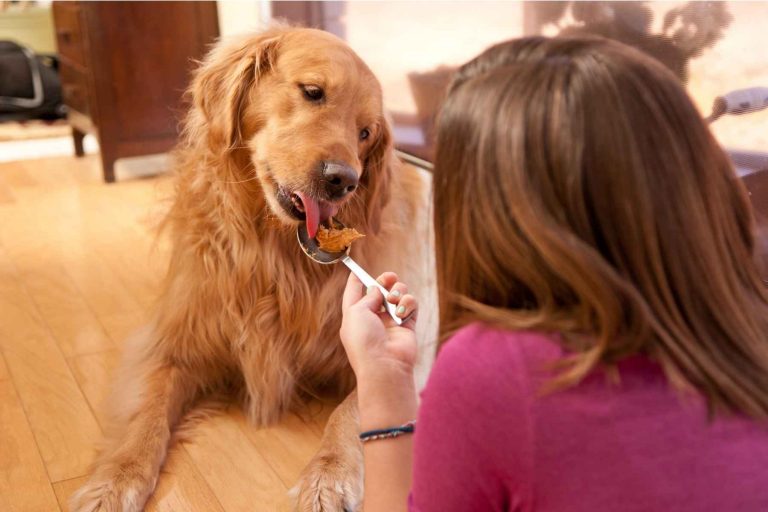How Long Should Dog Nails Be?

Keeping your dog well-groomed isn’t just about helping them look great – it helps with their hygiene, health, and overall wellness, too!
However, one area of dog grooming that is woefully under-addressed is keeping dog toenails trimmed consistently. Some of this has to do with the fact that most dogs don’t love to have their nails trimmed in the first place, but some of it has to do with dog owners figuring that Mother Nature will trim their dog’s nails for them.
It’s a weird way to look at it, but ask any of the dog owners in your life, and at least a handful of them will tell you that they just sort of let their dog’s nails take care of themselves.
Truth be told, though, you want your dog’s nails to be trimmed as soon as they start clicking – and definitely as soon as they start growing sideways. Those are obvious signs that a dog’s nail is getting way too long, and the nails need to be addressed ASAP.
If you’d like to learn a little more about how long dog nails should be and tips and tricks for trimming them (and more), check out the inside info we highlight below.
How Long Should Dog Nails Be?
There’s no real hard and fast length you want your dog’s nails to be, no universal size that fits every breed and every sized pup under the sun.
No, when trying to determine whether or not a dog’s nails are too long, it’s really more of a “you know it when you see it” kind of situation.
Dog nails that are dialed in will be relatively short (but not too short), hit the ground when the dogs walk but not click or scrape, and be strong and healthy-looking.
Nails that are too long, though, will put upward pressure on toes and pads, will click and scrape every time the dog takes a step, and may even start to grow at different angles because of the pressure being put on the nail 24/7.
If your dog’s nails barely touch the ground when they stand (and really only come in contact when they walk), they are the perfect length!
Keeping Your Dog’s Nails Trimmed is Critical
There are a couple of reasons you want to make sure your dog doesn’t grow excessively long nails.
For one thing, extra-long nails are incredibly painful for a dog to deal with.
Not only are the nails themselves a nuisance (and they can get uncomfortable in a hurry), but the overgrown nails are also going to cause your dog’s gait and posture to be thrown off a little bit.
This can put extra pressure on joints and ligaments that didn’t have to deal with a lot of pressure before, can cause bones to rub against one another that weren’t rubbing previously, and generally throw your animal out of whack while causing a lot of inflammation to boot.
Older dogs are especially prone to these kinds of problems when their nails get too long.
Secondly, long nails make it challenging for your dog to get a good grip when they are moving around – indoors and out.
Slick surfaces (hardwood floors, tile, and the like) become ice-skating rings when these nails are left to grow and grow.
If you’ve ever looked at your dog trying to make their way across the room and thought they were on rollerskates, the chances are that they needed their nails trimmed straightaway.
Nails that are extra long are prone to snapping, cracking, and breaking apart. This process is really painful (no surprise there), but these breaks can also become infected – and that’s a whole bunch of other problems you have to deal with (not to mention big vet bills, too).
Nails that grow into the pads or the dog’s skin will cause a lot of irritation, run the risk of infection, and make it challenging to move around.
At the end of the day, responsible dog owners need to stay on top of nail trimming sessions.
Surefire Signs Your Dog’s Nails Need a Trim
How do you know if your dog could use a quick trim?
The first and most obvious sign you should be looking for is if your dog has nails that look too long.
No, that’s not exactly the most “scientific” approach to recognizing that your dog could use a quick trim – but as we mentioned above, acknowledging that the nails on your dog are too long does fall under the umbrella of “you know it when you see it.”
Your dog doesn’t need to have perfectly manicured nails all the time. But their nails should be short, not causing them any pain, and shouldn’t cause friends, neighbors, or even complete and total strangers to wonder why their nails are so long!
Secondly, it’s probably a good time to trim things back anytime you see nails that are starting to become deformed – growing at different angles, growing sideways, splitting or cracking, etc.
Nails are supposed to grow straight, supposed to be blunted before coming in contact with the ground while standing, and if they get any longer than that, they need to be addressed.
Finally, if the nails are causing obvious discomfort to your animal, they need to be trimmed back.
You might not have to bust out a Dremel with a sanding pad (though that can be an effective way to get the job done), but filing things down, clipping your dog’s nails, and generally just keeping them nice and tight to avoid discomfort is critical.
How Often Do You Trim Your Dog’s Nails
If possible, you want to try and trim your dog’s nails weekly, or at the very least on a biweekly basis, to get the very best results.
That’s not always possible – you might only be able to trim the nails on your dogs every month or so just because of the way life works – but you should shoot for a weekly or biweekly session as often as you can.
Trimming the nails on your dog regularly helps the quick inside recede, allowing you to reshape and realign the nails and then maintain them at the perfect length. This is a lot better than letting them grow out, cutting them back, allowing them to grow out again, and rinsing and repeating the process repeatedly.
Trimming dog nails regularly like this helps dogs that are anxious about this kind of grooming get over those fears as well.
Feed your furry little family member some treats while you trim their nails on a weekly basis, and you’ll see their attitude transform before your very eyes in record time.
Try and trim their nails randomly every month or so, and you’ll still be fighting that fuzzy little family member years and years into dog adulthood.
What If I Trim My Dog’s Nails Too Far?
Nobody wants to cut their dog’s nails too short, especially if the nails have gotten particularly long and the quick has been growing out right along with the nail itself.
Every dog owner has clipped the quick at least once in their life – almost immediately causing their dog to yelp out in pain alongside a gush of blood from these nerve endings.
It’s not something you want to do too often.
If you have this kind of accident on your hands, you must stop the bleeding ASAP.
A towel, some soft paper towels, a clean rag, or a piece of microfiber can all be used to blunt the flow of blood. Styptic powders can be used to clot the blood as well, causing the bleeding to stop almost immediately (though it doesn’t do much for the pain the dog is going to be in).
Even a little bit of cornstarch pressed directly into the nail (and then held for a couple of minutes) can stop the bleeding.
As far as pain management goes, you just have to let your dog ride it out.
Chances are good they’re going to spend a little bit of time favoring that foot. If it takes any longer than a couple of days for them to bounce back, though, you might need to see a vet.
In the future, it’s a better idea to file dog nails when they are long – either by hand or with a Dremel. This helps you avoid the quick cuts into dark nails that can lead to an accident but still lets you keep nails in check all the same.
Closing Thoughts
At the end of the day, it’s very important for you to stay on top of your dog’s nails.
Let them grow too long for too long, and you’ll have a nasty nail problem on your hand, but you’ll have caused all kinds of discomfort, pain, and anxiety to your animal.
Trim those nails up once a week (or once every couple of weeks), and you and your favorite little pooch will be a whole lot happier!






